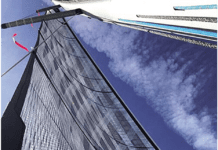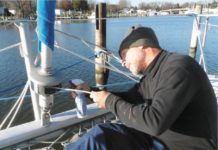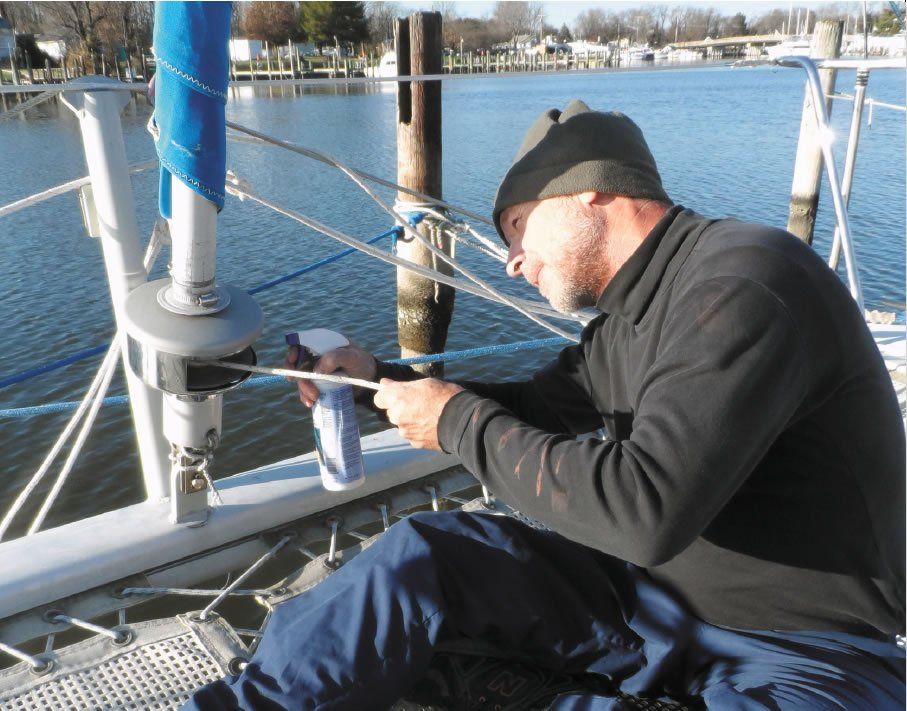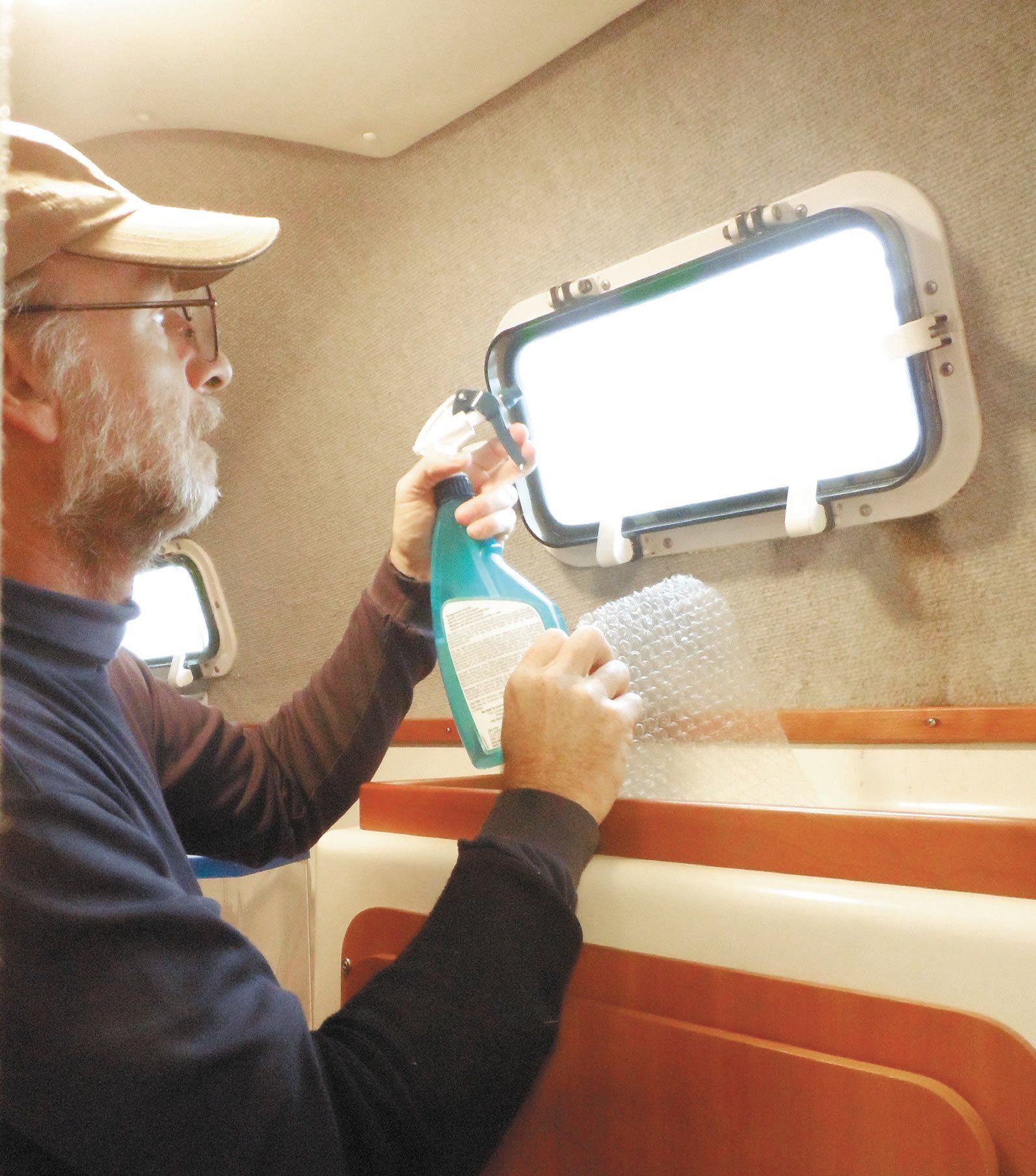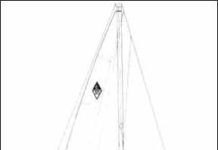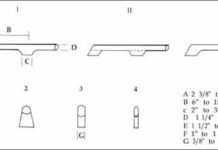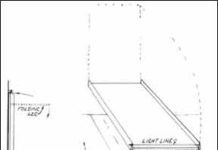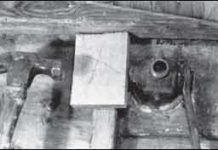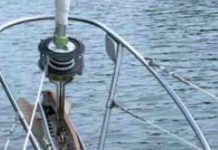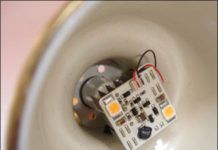Improve Your Catalina 30: Upgrading the World’s Most Popular 30-Footer
The Catalina 30 is a remarkable success story. We suspect that more Catalina 30s have been built than any other boat of that size anywhere in the world. While the basic boat has remained unchanged since it was introduced in 1975, there have been dozens, perhaps even hundreds, of minor developments in the boat in the course of a production run that is approaching 4,000 hulls. The advantage of a boat in production for so long is a high degree of product refinement over the years. The challenge for the owner of an early version of the boat is to upgrade his boat to the standards of models currently in production.
Design For: Building Your Own Handrails
One of the most used and easily made items of safety gear on boats is the handrail. Rare is the boat which shouldn't have handrails along the major portion of either side of the cabin top, and also down the centerline of the deck. Belowdecks, handrails are also important for safety. They are usually mounted on the cabin overhead, parallel to and on either side of the boat's centerline. To simplify mounting, the most desirable position is under the rails on deck. That way a single set of bolts can serve to fasten both rails.
“Good Hope’s” Folding Fiddles
In a rare instance of getting to have your cake and eat it too, this design for folding fiddles affords sturdy permanent fiddles suited to the typical folding cabin table found on boats under 35', while avoiding some drawbacks of many fiddle arrangements. It has the advantage that the fiddles are always attached to the table; they do not have to be removed when the table is folded up against the bulkhead. In addition, the fiddles can be folded out of the way when the table is in use, making the table more useful for dining in harbor, when the protection of fiddles isn't usually necessary.
Keep Seacocks Working Smoothly
Are the tapered plug seacocks on your boat difficult or impossible to close? If you tighten the adjustment nut enough for them to stop weeping all over the inside of your boat, does it take two hands and a hammer to operate them? If so, it's time for an overhaul. Even if they worked well last season, a little care while the boat is hauled can save you a lot of grief in the future. As part of your boat's routine maintenance, tapered plug seacocks should be disassembled, cleaned, lubricated, and reassembled on a regular basis.
Sealing Anchor Chain Spill Pipes
Anchor lockers are a convenience to coastal cruisers but no friend to offshore sailors. Passagemakers often forgo a deck-clearing locker for a belowdecks anchor-chain well. An angled spill pipe leads the anchor chain from the deck to the well, which often is under the forepeak and behind a watertight bulkhead. The setup not only eliminates the flooded-bow worries inherent with an on-deck locker, but it also moves the chain and anchors’ weight lower and further aft, where it should be to avoid hobby-horsing.
Keeping You Cool: Improving Your Icebox
Galleys on American production sailboats have come a long way in the last 20 years. We particularly remember one 40' cruiser-racer by one of the country’s most famous designers, whose galley consisted of a two burner countertop alcohol stove, a miniature sink, a few lockers, and an icebox: if you put 100 pounds of ice in it, it managed to keep small quantities of food at slightly below outside temperature for a few days at a time. Today, thank God, you’d probably find a better galley on any 30-footer.
Caring for Clear Plastics on Your Boat
There are three basic types of transparent plastics used on boats: clear vinyls, acrylics (the best known is Plexiglas), and polycarbonates (the marine standard is Lexan). Each has advantages and disadvantages, which is why most boats include some of each. Vinyl is actually plasticized, stabilized polyvinyl chloride (PVC). It’s the plastic of choice for any window or clear screen that rolls, folds, stretches or needs to be sewn to fabrics.
A Permanent Mount for the Sensibulb LED Reading Light
I have always been a big fan of brass berth lights, but have never really liked the halogen bulbs commonly used in them. The little halogen bulbs run hot, use a lot of power, and are prone to vibrating loose. When Sailor's Solutions (www.sailorsolutions.com) introduced the Sensibulb, I quickly ordered a couple to test in our custom built boat Suzy. They worked so well that I converted all six of our berth lights. The original Sensibulbs were nice units, but the mounting system was iffy. I elected to bypass the mounting system by removing the ceramic bulb holder and directly gluing the bulb support post to the back of the Sensibulb.
Professional Advice for Do It Yourself Boat Blister Repairs
Earlier this year, reader and occasional contributor Fred Hatch found himself facing a quandary common among boat owners. The topsides of his 32-foot sloop were well faded, and small blisters were beginning to show along the waterline. Would he be in for an ambitious haulout and big yard fees, or might there be other remedies?
Sparkling Brightwork: Careful Attention to the Details
It takes practice to produce a perfect, mirror finish on varnished wood, but it is not so much a difficult task as an exacting one, where attention to detail and no short cuts are the secrets to success. Whether you are finishing new wood, refinishing old wood, or maintaining a finish in good condition, the basics are the same.













